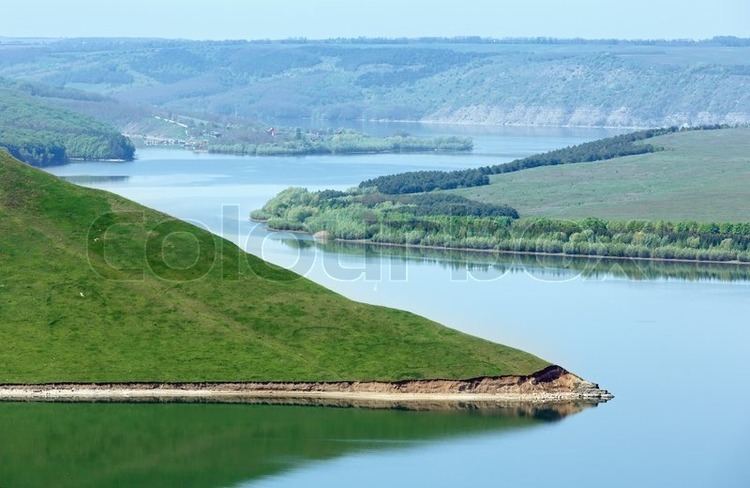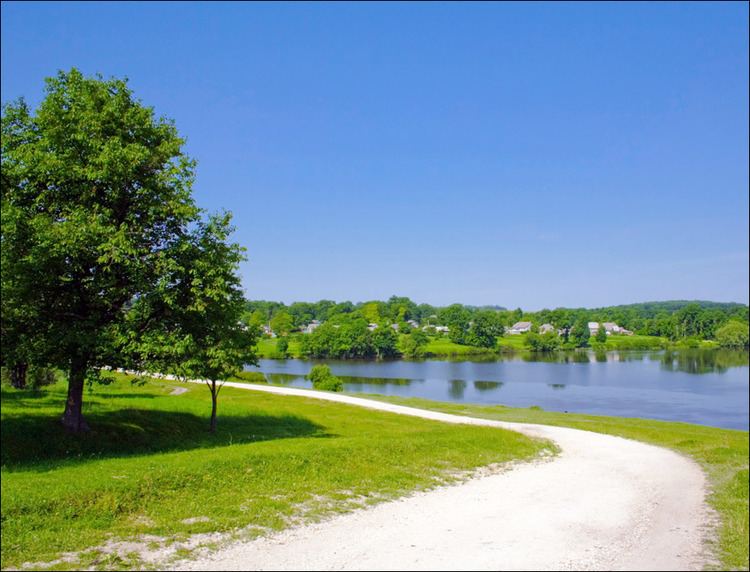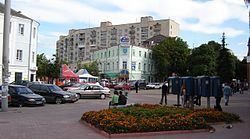Country Population 259,954 (2011) Area 90 km2 | Founded 1431 | |
University Khmelnytskyi University of Management and Law | ||
Map of Khmelnytskyi, Ukraine
Khmelnytskyi (Ukrainian: Хмельни́цький, [xmɛlʲˈnɪt͡sʲkɪi̯]; Polish: Chmielnicki) (until 1954, Proskuriv, Ukrainian: Проскурів; Polish: Płoskirów) is a city in western part of Ukraine, the administrative center for the Khmelnytskyi Oblast (region) and the Khmelnytskyi Raion (district). Khmelnytskyi is located in the historic region of Podolia on the banks of the Buh River. The city received its current local government designation in 1941.
Contents
- Map of Khmelnytskyi Ukraine
- Ialoni khmelnytskyi ukraine 2016
- khmelnytskyi ukraine
- History
- Pogroms
- World War II
- Cold War time military base
- Demographics
- Education
- Transport
- Sports
- Points of interest
- Notable people from Khmelnytskyi
- Twin towns Sister cities
- References

In 2015, the city's population was 267,973, making it the second largest city of Podolia after Vinnytsia and the largest city of the western part of the region.

Ialoni khmelnytskyi ukraine 2016
khmelnytskyi ukraine
History

The city foundation date is uncertain. The territory, where Khmelnytskyi is situated, has been inhabited for a very long time. Many archaeological discoveries have been discovered in the city suburbs. For example, to the East of Lezneve district, there was a settlement from the Bronze Age 2000 B.C., and from Skyths times from 7-3 century B.C. Since 1431 it was known as Płoskirów (Ploskurov, Плоскурoв) and was part of the Kingdom of Poland. It was a royal city. After the Second Partition of Poland in 1793, the city was annexed by the Russian Empire and was renamed Proskurov (Проскурoв). According to the Russian census of 1897, Proskurov with a population of 22,855 was the fifth largest city of Podolia after Kamianets-Podilskyi, Uman, Vinnytsia and Balta. In 1920 it became part of Soviet Ukraine. In 1954 the city was finally renamed Khmelnytskyi (Хмельницький) in the honor of the 300th anniversary of a treaty negotiated by Bohdan Khmelnytsky.
Pogroms
A series of pogroms have been carried out in the region, known together as the Proskurov pogrom. According to Vinnytsia's city archives the pogrom was conducted on the Friday night of February 15, 1919 by one of the otamans (generals) of the Ukrainian People's Army, Otaman Semysenko (also rendered as Semesenko). In total 390 men, 309 women and 76 children were killed, and 500 individuals were wounded.
The Chief Otaman Petliura had been appointed head of state just two days prior to the tragedy, on February the 13th. Petliura issued Order 131 in which he mentioned the fact that numerous Jewish parties in Ukraine (Bund, Poale Zion, Folks-Partei, Unificationists) rose to defend the sovereignty of the Ukrainian Republic and were cooperating with the Ukrainian government. He condemned such pogroms, calling those initiating them deserters and enemies of the State that must be liquidated. The order was co-signed by the Chief of Staff, Otaman Yunakiv. The order was published in the Ukraina newspaper on February 20 (March 4, old style). Later, Petliura issued a special order to execute Semysenko for being the pogrom initiator. The order was carried out on March 20, 1920. The Wikipedia article on Symon Petliura states that Semysenko's execution was postponed until November 1920 due to the "difficult situation".
During the Schwartzbard trial, at the end of which Petliura's assassin was pardoned on the grounds of self-trail (revenge), the main argument of the defense was that Schwartzbard had acted as an avenger of the Jews killed in pogroms perpetrated during Petliura's rule.
World War II
The town was occupied by the German Army from July 8, 1941 to March 25, 1944. On November 4, 1941, 5300 Jewish inhabitants of the town and surrounding villages were shot by an Einsatzgruppe. A ghetto was formed on December 14, 1941, where all surviving Jewish inhabitants had to resettle and were subjected to forced labor. They were subsequently killed in the fall of 1942. More than 9500 Jews were killed in the town in total.
Cold War-time military base
Khmelnytskyi was home to the 19th Division of the 43rd Rocket Army of the Soviet Strategic Rocket Forces during the Cold War. The intercontinental ballistic missile silos of the division that were housed there were removed and destroyed, partially with U.S. Cooperative Threat Reduction funding, during the 1990s.
Demographics
According to a 2017 survey, 94% of the population are ethnic Ukrainians and 3% are Russians.
The average life expectancy of its inhabitants is 65 years for men, and 75 years for women.
Education
Khmelnytskyi hosts 6 universities, 2 academies, 3 institutes, 12 colleges, 4 technical schools and 15 representative offices of other Ukrainian HEIs.
Transport
Khmelnytskyi has infrastructure for transportation connections with Moscow, Prague, Bratislava, Warsaw, Budapest, Belgrade and all major Ukrainian cities. The distance from Khmelnytskyi to Kiev by railway is estimated to be 366 km (227 mi), by highway it is estimated to be 384 km (239 mi). The highways Kiev-Lviv, Odessa-Lviv and Chernivtsi-Kiev pass through Khmelnytskyi. The city is served by the Khmelnytskyi Ruzhychna Airport. Khmelnytskyi's airport has a 2,200 m (7,217.85 ft) concrete runway; at the airport there is a check point for crossing the state border of Ukraine.
Sports
Khmelnytskyi is home to the competitive football team FC Dynamo Khmelnytskyi.
Points of interest
Notable people from Khmelnytskyi
Twin towns — Sister cities
Khmelnytskyi is twinned with:
In January 2016 the Khmelnytskyi city council terminated its twinned relations with the Russian cities Tver and Ivanovo due to the Russian military intervention in Ukraine (2014–present).
